Author:Lai Hsin-Chung, Taoyuan District Agricultural Research and Extension Station, Council of Agriculture, Executive Yuan
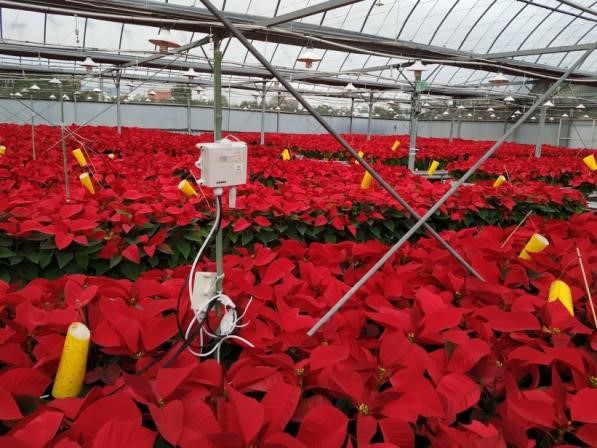
Agricultural practitioners all hope for high yield and high quality of their crops. Measures of cultivation management are taken to improve the planting environment, fertilization, irrigation, and pest control. The agricultural practitioners get a better understanding of the cultivation environment and growth status through the analysis of collected data, which helps improve the management method. Automatic monitoring modes are set up with data analysis technologies for higher resource efficiency and benefit maximization. Based on the adaptability and output value of the crops, cultivation environment is selected either in open air or in greenhouses. High-profit crops are grown in greenhouses sheltered from external climate and kept in set conditions such as soil moisture, fertilization, temperature, luminosity, etc. with environmental control facilities (irrigation, fans, water walls, spraying, shading nets, fill lights, etc.), whose data are captured with environmental sensors. The development of Internet of Things (IoT) technology enables the wireless transmission of data to the cloud-based system. Farmers operate through mobile devices such as mobile phones and tablets, to issue commands via the network to remotely manage their farms.
Taoyuan District Agricultural Research and Extension Station, with the aim to improve the agricultural production efficiency, to reduce the crop losses caused by climate and pests and diseases, and to overcome problems of labor shortage and farming experience inheritance, has actively invested in smart agriculture projects. The Internet of Things (IoT) and AI technologies are used to integrate multiple greenhouse control facilities, set up smart agricultural development system, develop various wireless transmission environmental sensors, controller modules and facility environmental control technologies. The AI system uses deep learning to establish an image recognition model for crop growth stages and an algorithm for crop growth model using R language. It monitors the environment in real time through sensors, uses real-time image data in the field to identify and predict the growth periods, and activates management programs based on the growth periods to make adjustments on the irrigation, nutrient solutions, temperature and luminosity, to maintain precise management conditions that allow crops to grow in a stable environment with stable yields and quality. Moreover, the electronic monitoring system is developed to integrate information of geographic maps, fields, crops, digitized data, images and crop growth predictions, thereby obtaining the field management information in real time from the agricultural intelligence room.
As agricultural environment and crops are diverse by nature and the habits of management vary, smart environmental control in each farm requires customized planning to be cost effective. To give the power of programming to agricultural experts and farmers who do not understand programming languages, the smart agricultural development system has integrated building blocks of visual programming (graphic program editors) for users to freely edit their programs in the management mode.
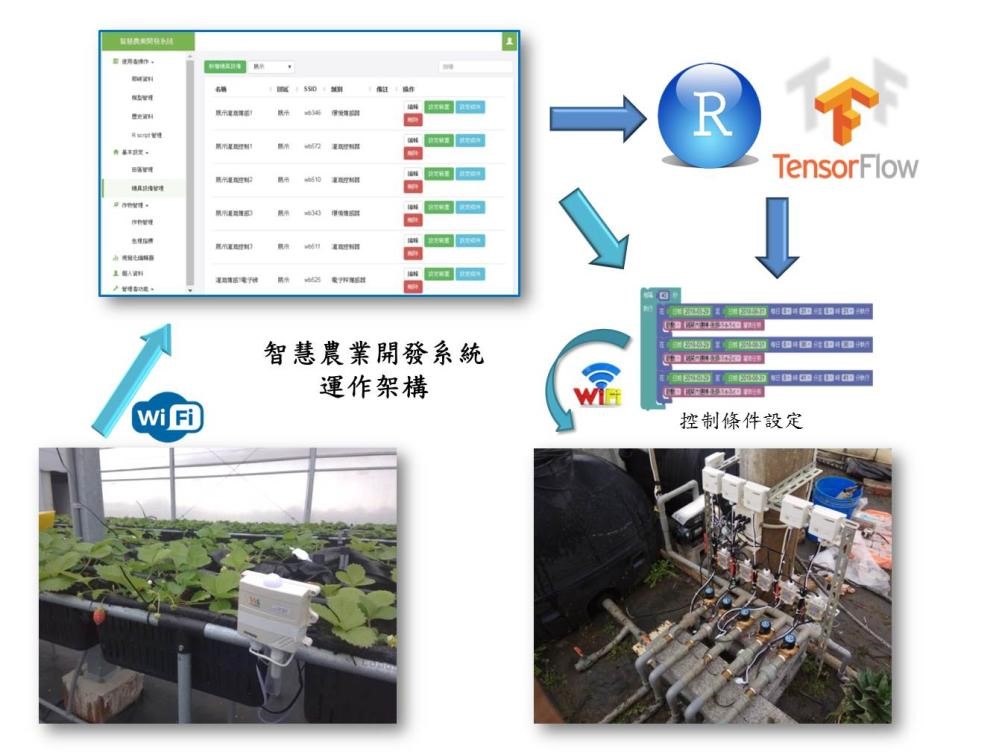 Smart agricultural development system and its operating structure.
Smart agricultural development system and its operating structure.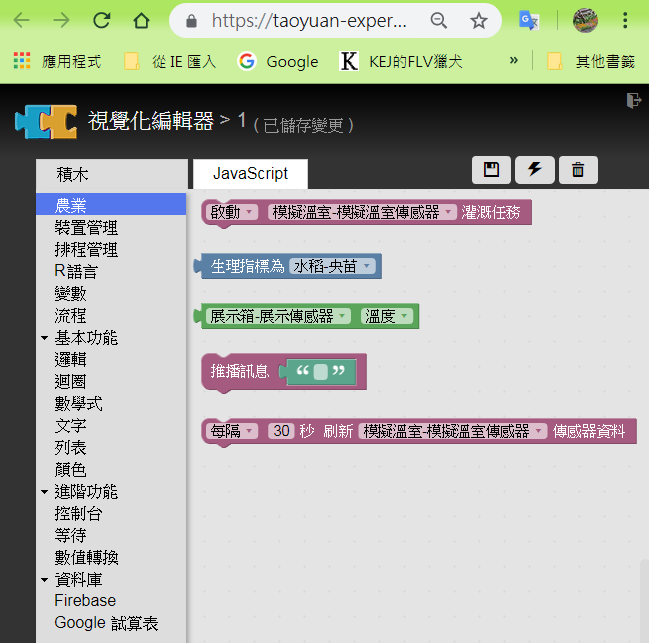 Graphic program editors and the web page editing control program of the smart agricultural development system are operated using the browser to have remote control of the equipment on the field.
Graphic program editors and the web page editing control program of the smart agricultural development system are operated using the browser to have remote control of the equipment on the field.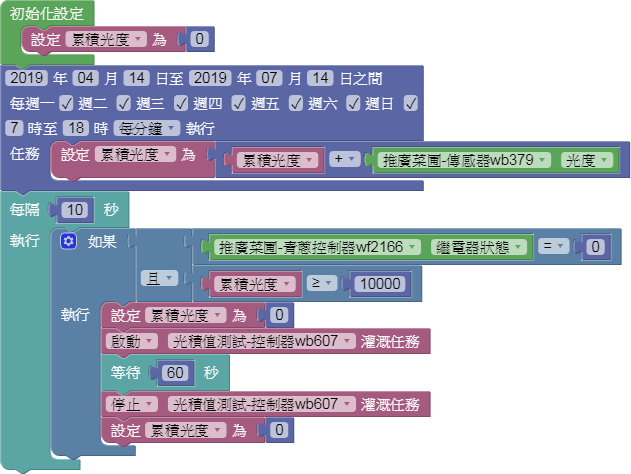 The values on the sensor are accumulated by variable blocks, which can be applied to the irrigation mode.
The values on the sensor are accumulated by variable blocks, which can be applied to the irrigation mode.For the promotion and development of smart agriculture in Taiwan, practitioners of agricultural R&D, information technology and equipment manufacturers need to collaborate to further develop agricultural technologies, integrate resources, upgrade technological standards, reduce development costs, and enhance core techniques while implementing the smart technologies in exemplary farms, thereby building a chain of smart agriculture industry and expanding to global service.
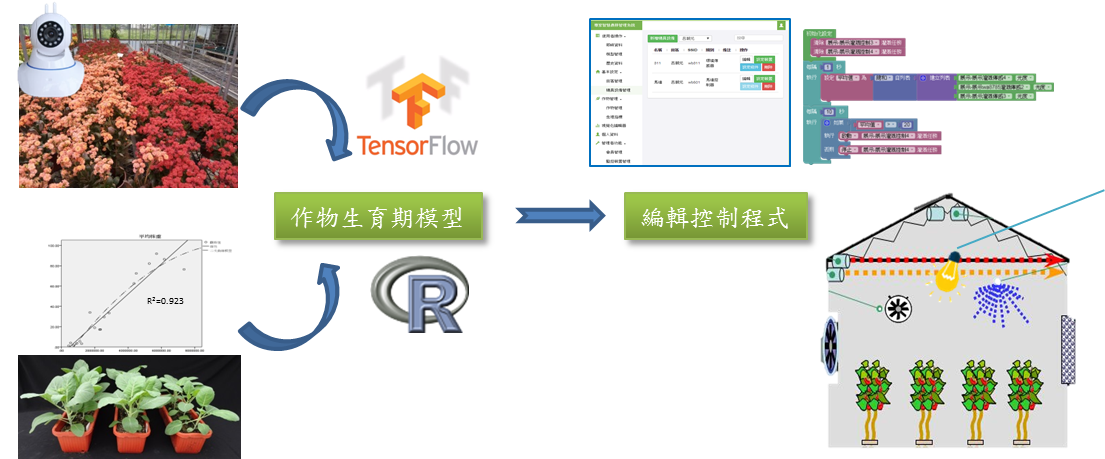 Based on crop image identification and the crop growth model, the smart facility control and management meets the needs of crop management in different periods.
Based on crop image identification and the crop growth model, the smart facility control and management meets the needs of crop management in different periods.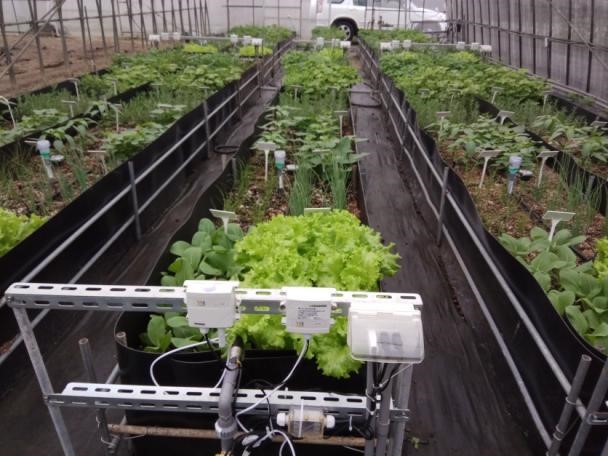 Taoyuan District Agricultural Research and Extension Station develops urban smart farming techniques using environmental sensors and controllers.
Taoyuan District Agricultural Research and Extension Station develops urban smart farming techniques using environmental sensors and controllers.